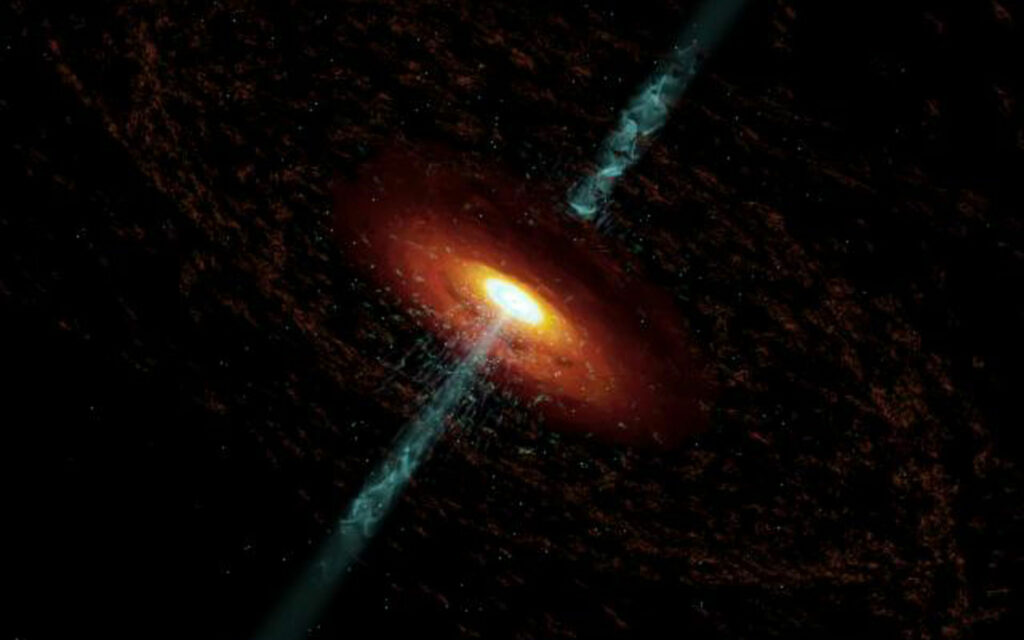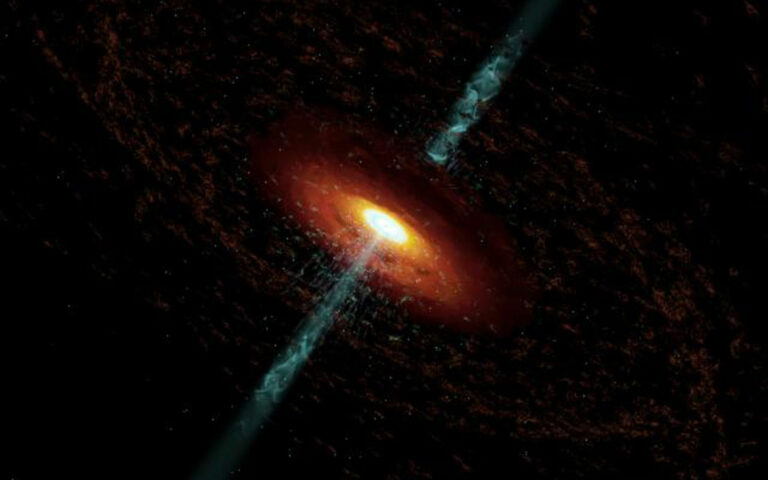The Early Universe Should Be Awash in Active Galaxies, but JWST Isn’t Finding Them
For decades the most distant objects we could see were quasars. We now know they are powerful active black holes. Active galactic nuclei so distant that they resemble star-like points of light. It tells us that supermassive black holes in the early Universe can be powerful monsters that drive the evolution of their galaxies. We had thought most early supermassive black holes went through such an active phase, but a new study suggests most supermassive black holes don’t.

Most galaxies contain a supermassive black hole. They contain millions or billions of solar masses. They can power tremendous jets of ionized gas streaming away from a galaxy at nearly the speed of light, rip stars apart to seed a galaxy with gas and dust, and even strip galaxies of dust to winnow star formation. They can also remain quiet for billions of years, hiding in a galaxy’s central bulge, as does the central black hole in the Milky Way. But the sheer mass of these black holes suggests they must have grown quickly in their youth, suggesting a period of extreme activity similar to distant quasars.
This new study looks at a period of cosmic history known as cosmic noon. It’s the time when the Universe was about 3 – 6 billion years old and marks the age when star production in the Universe was at its peak. This is also around the time when we would expect supermassive black holes to be active since their churning of gas and dust can trigger star formation. Using the James Webb Space Telescope, the team gathered data from a patch of sky known as the Extended Groth Strip (ESG).

The ESG is a small, barren region of sky between the constellations of Ursa Major and Boötes. It was observed in detail by the Hubble Space Telescope in 2004 and 2005, which found more than 50,000 galaxies. In 2011, the Spitzer Space Telescope observed the region at infrared wavelengths as part of the All-Wavelength Extended Groth Strip International Survey (AEGIS). Spitzer saw the glow of lots of active black holes, but not as many as anticipated. This wasn’t too unexpected, since it was quite possible Spitzer wasn’t sensitive enough to see smaller AGNs, or those deeply shrouded in dust.
This new survey made by JWST expected to see more, but that wasn’t the case. The Cosmic Evolution Early Release Science program (CEERS) found about the same number of active black holes as before. And with the higher resolution and sensitivity of JWST we can just discount the conclusions.
What this team discovered is that active black holes are rare during cosmic noon, meaning that most galactic black holes grow at a slower pace. The team also found that within smaller galaxies there wasn’t a tremendous amount of dust. Many of the galaxies observed resembled the Milky Way. Spiral galaxies with limited dust and a quite central black hole. This suggests the possibility that our galaxy never had an AGN period.
It should be noted that this initial result only focuses on about 400 galaxies. The team plans to complete a larger survey of 5,000 galaxies next year.
Reference: Kirkpatrick, Allison, et al. “CEERS Key Paper VII: JWST/MIRI Reveals a Faint Population of Galaxies at Cosmic Noon Unseen by Spitzer.” arXiv preprint arXiv:2308.09750 (2023).
Source: UniverseToday
Do not forget to share your opinion with us to provide you with the best posts !





0 Comments